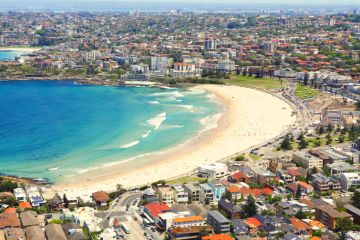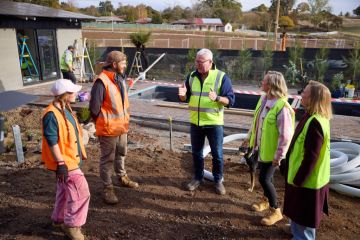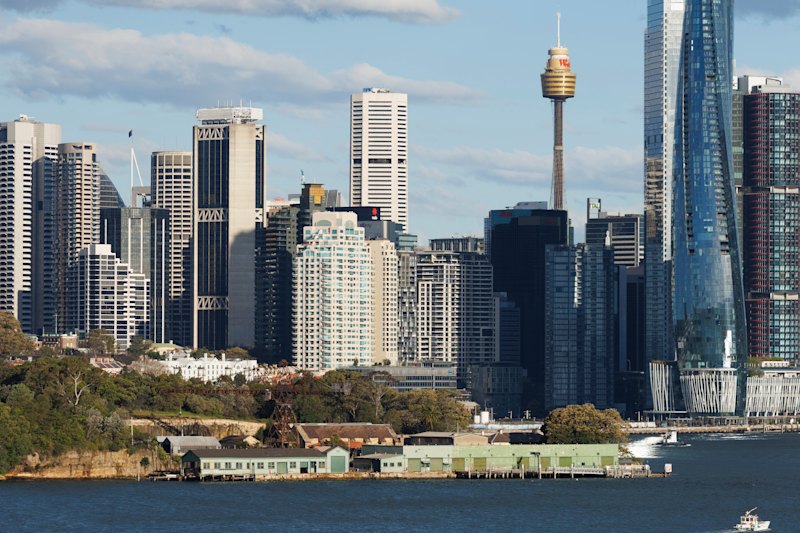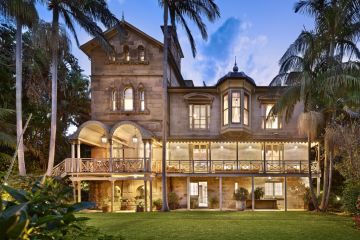Escape to the Country: Fish Creek, much more than a drive-through town
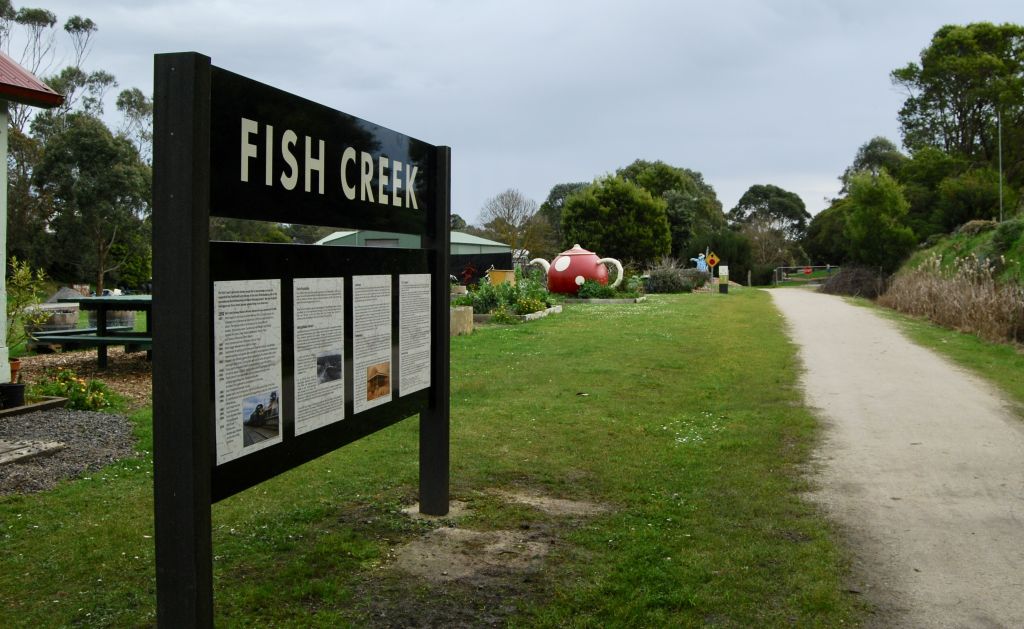
If you’ve ever driven to Wilson’s Promontory on Victoria’s South Gippsland coast, there’s a high chance you’ve checked out Fish Creek.
Ten years ago you may have, as one local put it, “stopped at the servo, grabbed a couple of dim sims and kept going”.
But those days are over. The tiny town is now home to a strong community that’s teeming with arts and culture, not to mention delicious food and picturesque scenery.
But only a tad over 800 people live in Fish Creek, making it one of regional Victoria’s best-kept secrets.
Fish Creek has no less than eight art galleries and studios, all widely varied in medium. There’s everything from sculpture to botanical illustration, woodwork to jewellery.
Perhaps it’s most popular arts destination is the Alison Lester Gallery, which does a thriving trade in books and prints by the award-winning children’s author and illustrator.
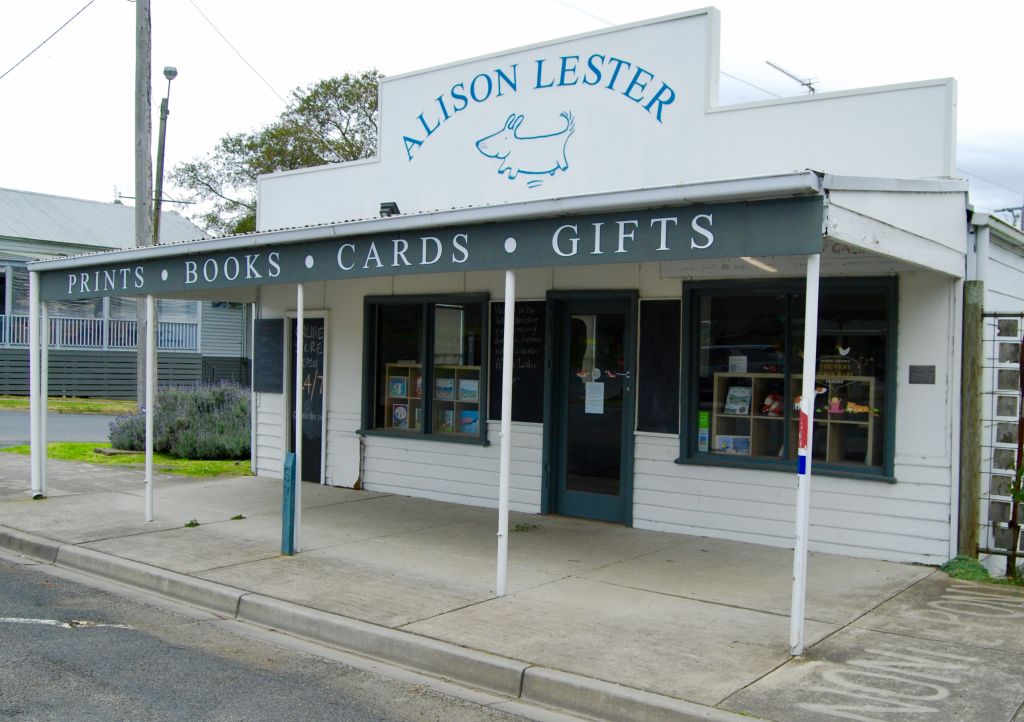
Just up the road, fellow children’s illustrator and author Roland Harvey also owns a gallery selling prints and books. Both Lester and Harvey are frequently in town for book signings.
Come May of every second year, Fish Creek is inundated by tea lovers and knitters for the biennial Tea Cosy Festival. The COVID-19 crisis put a stop to this year’s celebrations, but the quirky festival usually attracts up to 5000 people over the two days it is held.
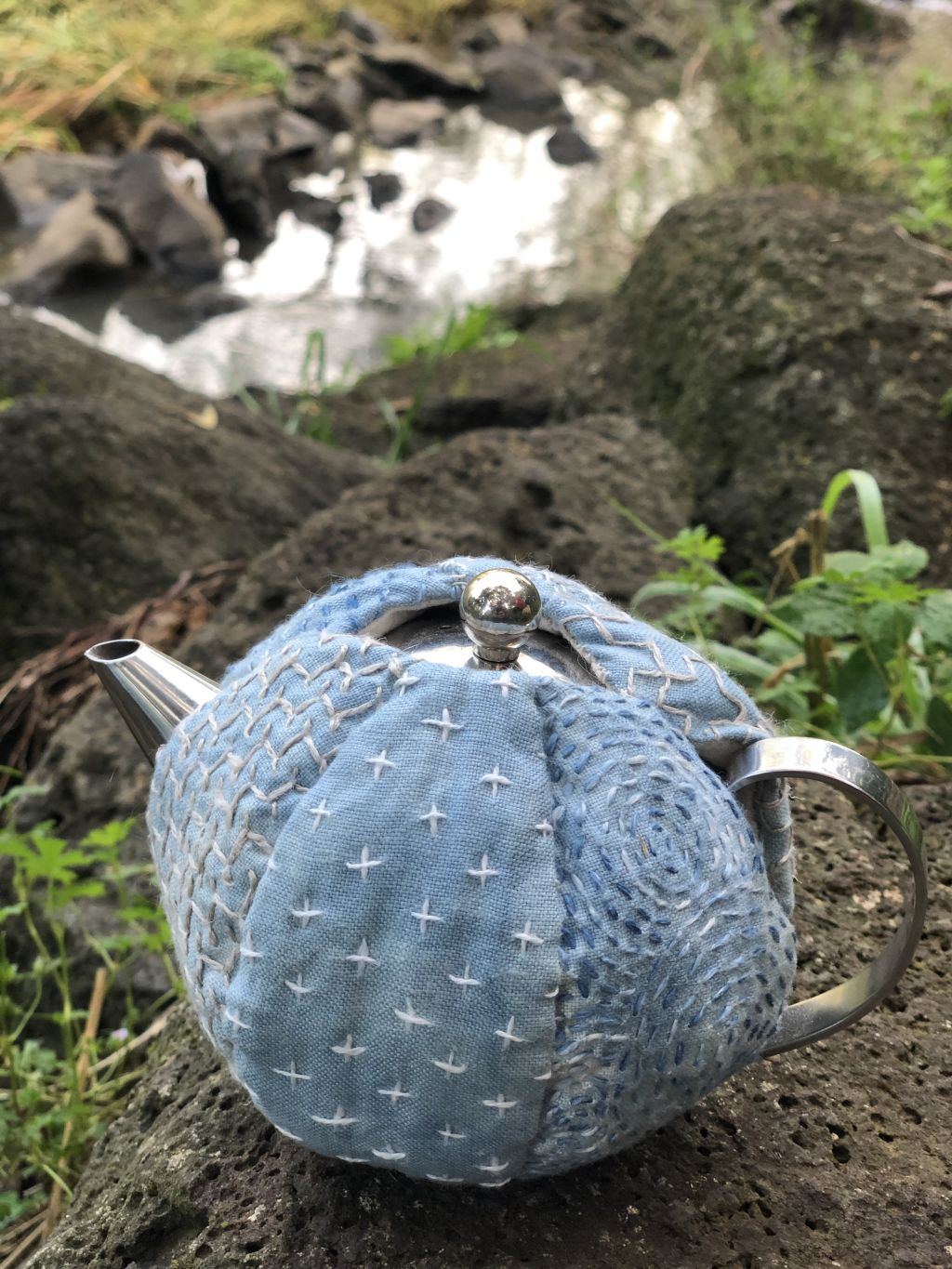
The town prides itself on its friendly community and for such a small town, its surprising range of social groups is testament to that. There’s the community garden, the film society, the landcare group and, of course, the football and netball club.
Impressively, the club is one of Australia’s most successful. It has won 36 senior premierships since its formation in 1891, which equates to one flag every three-and-a-half seasons.
Population: 827 as of 2016 census.
Who lives there?
Neil and Judy Travers are like many locals. They were simultaneously seeking a tree change and sea change and Fish Creek was the answer. The nearest beaches, including Sandy Point, are just 15 minutes by car and the town is surrounded by green pastures.
The Travers purchased the Waratah Hills Vineyard 12 years ago, which included 16 hectares of land, four of which are under vine.
“We didn’t have any connections to much down in this part of the world, but we did have a beach place in another little area called Venus Bay and the more we saw of South Gippsland we thought this would be a good place to be,” Neil Travers said.
“We were driving around looking for some land to build something on and found the vineyard and that was the start of our journey.”
Pinot noir is their main production, but the winery also makes chardonnay.
Tourism is starting to take off in Fish Creek, says Travers, mainly because it’s a gateway to the beloved Prom, but also because more people are discovering it.
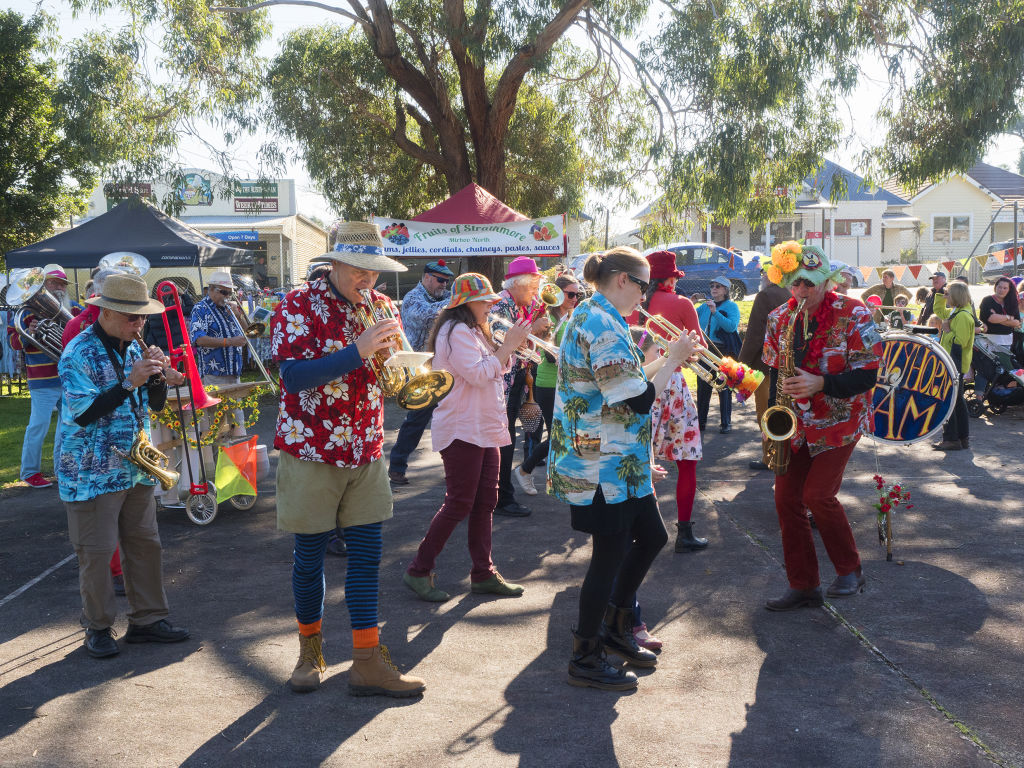
“There’s been a lot of other newcomers like Judy and I who have made the escape to this area,” he said.
“It’s because of the galleries and Alison Lester, but particularly because we’re the gateway to Wilsons Prom National Park. The entrance to the park is only 20 minutes from Fish Creek.
“Also, we’re joining in with the Mornington Peninsula and Bellarine Peninsula to be marketed as the pinot coast, which will be the finest places to experience cool climate pinot noir.”
What happens there?
Avid walkers and cyclists have been attracted to Fish Creek because it sits approximately halfway along the 72-kilometre Great Southern Rail Trail. The trail begins in Leongatha and ends in Port Welshpool.
Many choose to make an adventure of it – walking or riding small sections of the trail, then stopping overnight in Koonwarra, Meeniyan, Fish Creek, Foster, Toora or Welshpool.
The Hoddle Mountain Trail is a relatively new addition to Fish Creek and begins as a detour off the Great Southern Rail Trail. The 17-kilometre loop passes through farmland to the Laver’s Hill quarry and up to the Mount Nicoll Lookout.
Richard and Jackie Dargaville moved to Fish Creek for its small town appeal. The couple have since become instrumental in setting up community activities.
Richard was on the management group that set up the Hoddle Trail while Jackie was a founding member of the Community Garden.
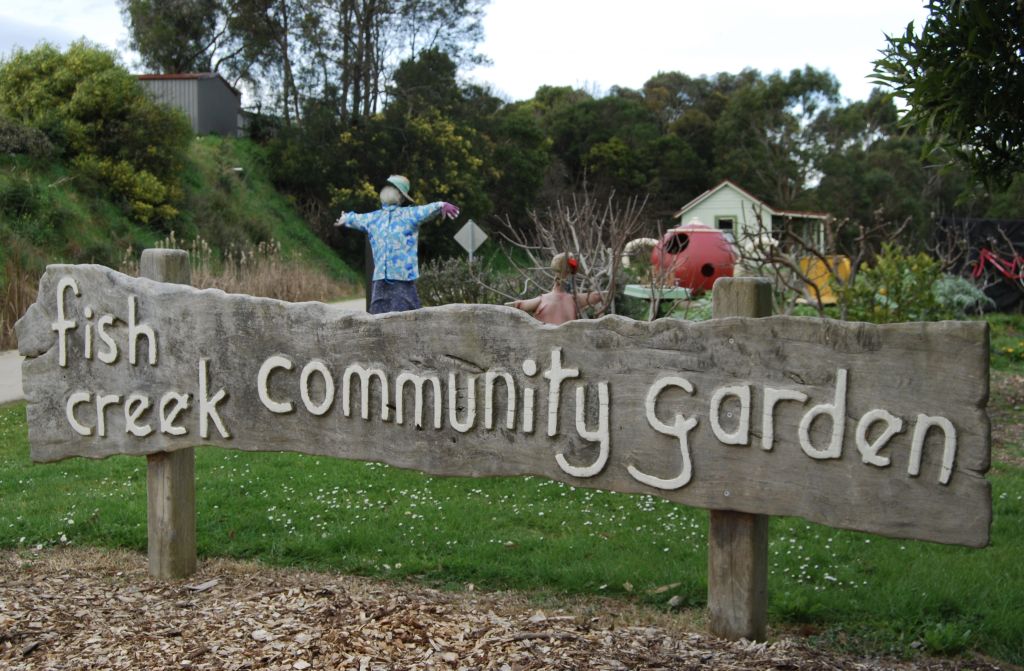
“Why Fish Creek? It’s just got so much going for it,” Jackie Dargaville said.
“With its rolling hills, the sea, the Prom – it’s just got so many assets.
“And the community is wonderful. Everybody knows everybody. You go down to get the paper on Saturday morning and it takes about an hour because you bump into everyone you know.
“We benefited enormously from coming here.”
The Dargavilles were also part of a community group that set up the Prom Coast Film Society, which in pre-pandemic times showed a film in the Fish Creek Hall each month.
“We choose the films once a year in November and watch them on the first Friday of the month,” Dargaville said.
“We have drinks available and a country supper, so it’s a really convivial, social night.
“If the restrictions allow, we’re hoping to have a bit of a festival at the end of the year to put on all the films we haven’t been able to show this year.”
What’s life like?
In Fish Creek, people love having a chinwag and sharing whatever latest creations they’ve made. When John Cooper first moved to the town, he quickly found this out on his daily walk to work at the Alison Lester Gallery.
“I’ve lived in lots of different places in my life and especially when you move into a country town, there’s that whole thing about not being a local if you haven’t been there for 30 years, but here you feel accepted straight away,” he said.
“When I first started walking down the road to the gallery, no one really spoke to me, but after a couple of weeks it would sometimes take me an hour to get home because people would come out to talk or give me a piece of cake they’d made, or a bag of something from their trees or a jar of jam.
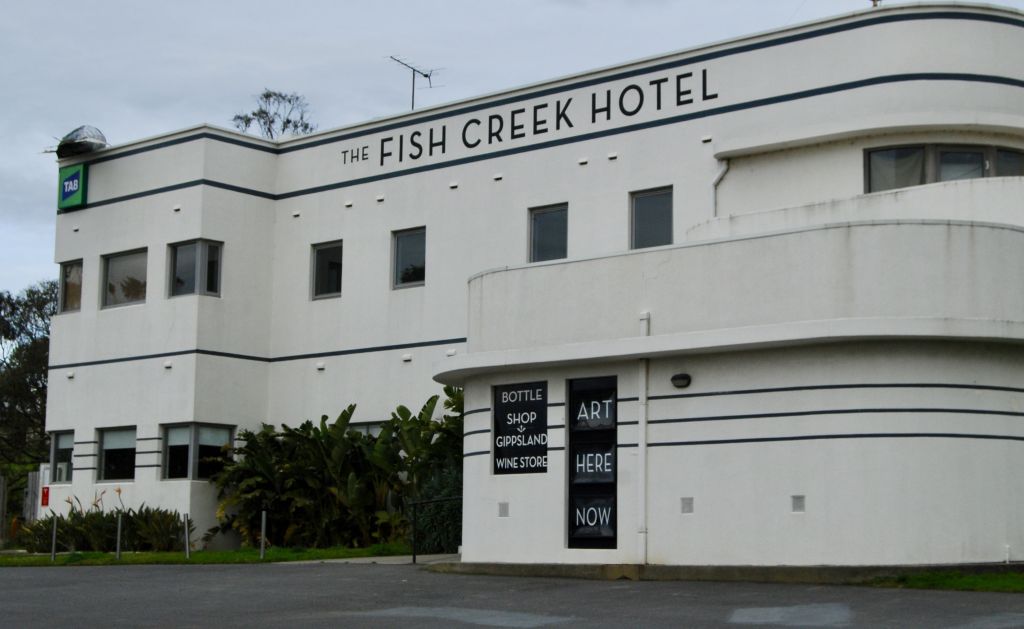
“It’s a really nice, caring community and I think a lot of country towns are like that because they’re small enough for you to know everybody.”
Cooper, a close friend of Lester’s, has been working at the gallery since it opened in 2014 and has watched Fish Creek’s popularity slowly increase.
“It’s a fairly small population, but it’s growing,” he said.
“When we first moved in there were 70 kids at the school and now there’s 120, 125. So more families are moving into the area.”
What jobs are there?
The dairy industry employs a large chunk of people from Fish Creek – 24.7 per cent according to the Australian Bureau of Statistics. Beef cattle is the next main employer, followed by hospitals, cafes and restaurants, and accounting services.
The town is also full of artists who either run their own businesses or work at one of the local galleries.
Why should you move there?
You may have seen the “Where the hell is Fish Creek?” bumper sticker and wondered the same thing. Fish Creek is tucked into an inland location that enjoys a range of beaches to the south.
Although beautiful, none of these beaches are hugely popular coastal escapes and don’t attract the hordes of holidaymakers others do.
So while Fish Creek does enjoy a healthy tourism industry, it’s not a place where many Melburnians own holiday homes. That means the town has a permanent population and doesn’t shut down in the off-seasons.

We recommend
We thought you might like
States
Capital Cities
Capital Cities - Rentals
Popular Areas
Allhomes
More
